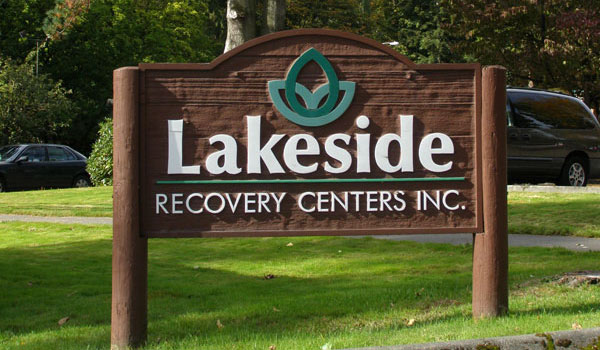Many people who struggle with substance use disorder are addicted to more than one drug. In fact, it’s not uncommon for people seeking outpatient substance abuse treatment to be using two or more substances at once. Most people who use multiple addictive drugs at once are seeking to enhance the effects of whatever drugs they’re taking. But even the most addictive drugs can be made even more dangerous by using them with other substances. And combined drug intoxication is a leading cause of overdose death, making polysubstance use disorder extremely dangerous.
What Is Polysubstance Use Disorder?
Polysubstance use disorder is when someone regularly takes two or more drugs at the same time or within a short time frame. You may also hear it referred to as multiple substance use or polysubstance abuse. Polysubstance use disorder can be intentional, as when someone seeks to intensify the effects of one drug by taking another or wants to experience the effects of both drugs together. It can also happen unintentionally when someone takes a drug that has been unknowingly mixed with another substance, such as cocaine that has been cut with fentanyl.
Polysubstance use, whether intentional or unintentional, is very dangerous and can cause unintended effects and even overdose. In 2022, more than half of overdose deaths involved two or more substances. That’s why it’s important to know the signs and symptoms of polysubstance addiction and how to get help.
Who Is at Risk?
Recent studies show that polysubstance use is fast becoming the norm, not the exception. People who use alcohol, marijuana, opioids, cocaine, and heroin are more likely to use these and other drugs at the same time. People who started using drugs at an early age are at particular risk for polysubstance use disorder. Other risk factors include:
- Having experienced trauma and/or abuse
- Being under 20 years of age
- Living with anxiety, depression, or other mood disorders
- Unemployment
- Lower levels of education
- A family history of substance abuse
Polysubstance Use: Mixing Stimulants
Drugs classified as stimulants are also known as uppers. Commonly used stimulants include:
- Cocaine
- Adderall
- Ritalin
- Methamphetamine
- Dexedrine
- Khat
Combining these drugs can cause serious cardiovascular symptoms, such as dangerously high heart rate and blood pressure. Users who take two or more stimulants at the same time increase their risk of heart attack, stroke, brain injury, liver damage, and even sudden death.
Polysubstance Use: Mixing Depressants
Drugs classified as depressants are also known as downers. Commonly used depressants include:
- Alcohol
- Opioids including heroin, fentanyl, and codeine
- GHB
- Xanax
- Valium
- Cannabis
- Ketamine
Depressants slow your central nervous system and reduce your breathing rate. Taking two or more depressants together, such as Xanax and alcohol, can intensify the effects of the drugs, causing users to become more intoxicated more quickly and leading to potentially life-threatening changes in heart rate and breathing rate. Mixing depressants, especially opioids such as heroin and fentanyl, drastically increases the risk of overdose.
Polysubstance Use: Mixing Stimulants and Depressants
People who use stimulants and depressants together often do so to enhance the effects of each substance. Some people think that using a depressant in conjunction with a stimulant will balance out or take the edge off of the stimulant’s effects. This is not the case. Mixing depressants and stimulants can disguise the harmful effects of both drugs, leading users to underestimate how much they’ve taken and increase their use. This can lead to serious cardiovascular symptoms, including heart attack, stroke, and even sudden death. Using depressants and stimulants together can cause other health issues such as liver toxicity, cognitive issues, anxiety attacks, and overdose.
One of the most common stimulant/depressant combinations is cocaine and alcohol. Many people drink alcohol when they use cocaine to reduce the anxiety cocaine causes. This combination of drugs is particularly dangerous because when taken together, alcohol and cocaine cause the liver to create cocaethylene, itself a dangerous drug which stays in your system longer than cocaine and is more toxic to your liver and heart.
Polysubstance Use: Intentional vs. Unintentional
While some polysubstance use is on purpose, such as when users mix opioids and benzodiazepines to enhance the pleasurable effects of both drugs, other polysubstance users do so unintentionally. Heroin and synthetic opioid users may unknowingly take drugs that have been cut with fentanyl. Prescription drug users may also use alcohol or other legal drugs, unaware of the consequences of mixing two substances. But even without intent, the effects of polysubstance use can be just as dangerous.
Prescription Drugs and Non-Prescription Drugs
Prescription drugs are a common factor in polysubstance use disorder and, when taken with other substances, can cause many of the same dangerous effects as street drugs. For instance, prescription stimulants such as Adderall shouldn’t be mixed with other substances. Even antihistamines can be dangerous when combined with depressants such as opioids or alcohol. It’s important to tell your doctor about all the drugs you regularly take so you can avoid dangerous drug interactions.
Physical Symptoms of Addiction
If you’re concerned that you or a loved one is dealing with polysubstance use disorder, look for these physical signs of addiction:
- Sudden weight loss or gain
- Loss of energy
- Increased fatigue
- Visible intoxication
- Loss of interest in personal appearance and grooming
- Change in sleep patterns
- Increased injuries due to intoxication
- Increased health problems such as heart disease, seizures, and stroke
- Intense drug and/or alcohol cravings
- Withdrawal symptoms when drug use is stopped
- Increased tolerance leading to increased drug use to achieve the same effect
Psychological Symptoms of Addiction
Polysubstance dependency also causes behavioral and social changes. People with a polysubstance addiction may show these signs:
- Erratic mood swings
- Irritability or easily becoming agitated
- Personality changes
- Increased impulsivity
- Poor decision-making
- Increase in risky behaviors
Social Symptoms of Addiction
People dealing with a polysubstance use disorder will exhibit changes in the way they engage with friends, family, and everyday activities. Social signs of addiction include:
- Increased desire for privacy or isolation
- Withdrawal from social relationships
- Inability to keep up with school, work, or family responsibilities
- Requests for money with no appropriate reason
- Loss of interest or participation in regular hobbies and recreational activities
- Dropping old friends and/or sudden appearance of new friends
- Being arrested and other legal problems
Health Effects
Any kind of substance use disorder is dangerous to your health, but using two or more drugs at once dramatically raises your risk of developing serious health issues. People who use two or more drugs together are at increased risk of cardiovascular problems, organ damage, brain injury, accidents, and fatal overdose. And each specific drug combination carries its own unique risks. For instance, using MDMA and alcohol together can lead to kidney failure.
Mental Health Effects
People with mental health issues such as anxiety or depression may use multiple substances to self-medicate. But polysubstance use disorder can actually aggravate existing mental health conditions. It can also cause new mental health issues such as substance-induced psychosis. Polysubstance use disorder can also create changes in your brain that makes you more likely to develop mental health issues.
Increased Risk of Overdose
Every year, twice as many people die from drug overdoses than from car accidents. Polysubstance use is an increasing cause of these overdose deaths. Mixing drugs can intensify the effects of each drug, making overdose more likely. In some cases, taking multiple drugs can mask the effect of each drug which makes it easier to overdose.
When to Seek Emergency Help
Using multiple drugs puts people at increased risk for overdose. If you think someone is overdosing, it’s important to seek emergency help immediately. Even if you’re not sure, it’s better to err on the side of caution. If you even suspect an overdose, call 911.
How To Help Someone Struggling with Drug Addiction
Treatment for polysubstance dependence is highly individualized. Depending on what substances you’ve been using, your withdrawal symptoms can be unexpected and uncomfortable. That’s why we recommend that all polysubstance dependent patients begin by going through in-patient detox. There, experienced and compassionate clinical professionals can monitor you around the clock and manage your symptoms to keep you as safe and as comfortable as possible.
Treatment for polysubstance use disorder can be challenging, so it’s important to choose a treatment facility with evidence-based practices and demonstrable outcomes. Your treatment plan should be tailored to your specific needs, physical and mental health issues, and personal experiences in order to address the underlying reasons for your addiction and give you the tools to be successful. Your recovery plan may include several different types of therapy such as cognitive behavioral therapy, group therapy, and in some cases medication-assisted treatment.
If you or someone you love is dealing with polysubstance use disorder, there is hope. Treatment for multiple addictions can be complex, but you don’t have to figure it out on your own. Our admissions team is standing by 24/7 to help you get started on the road to recovery. Admitting you need help is hard, but it’s the first step towards reclaiming your life. Please contact us today to speak to someone who cares.






